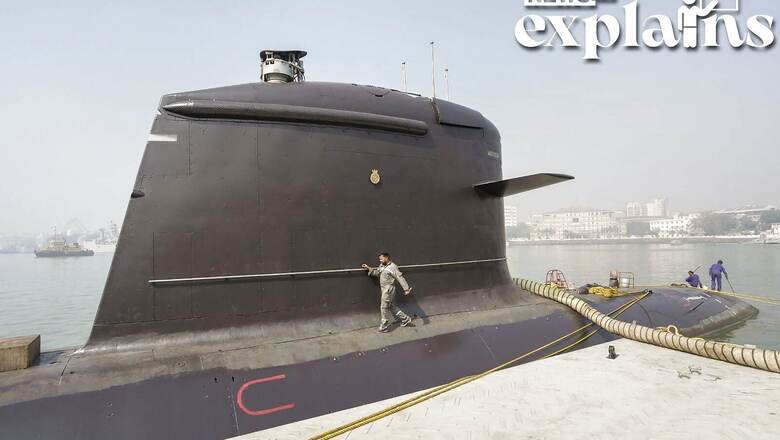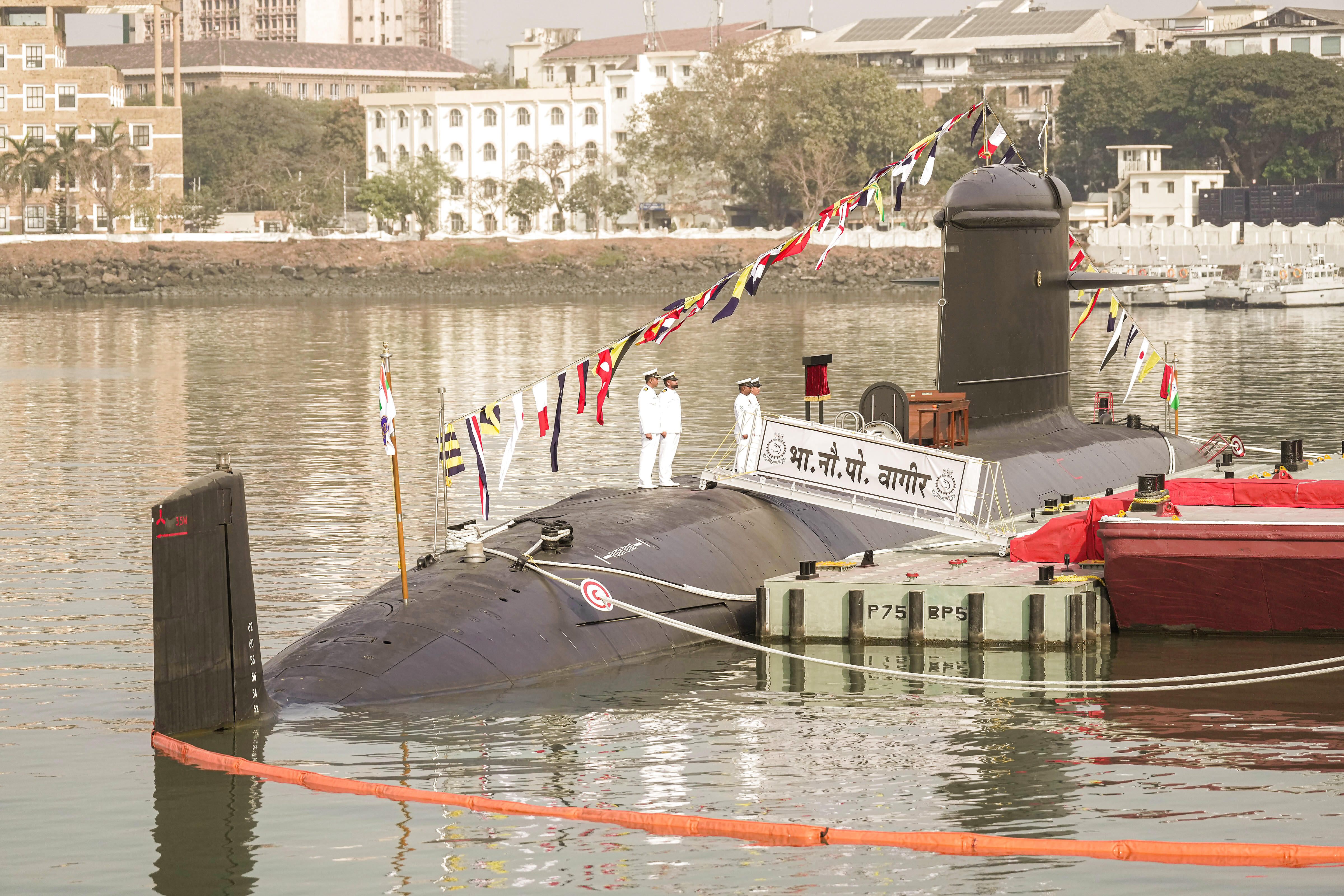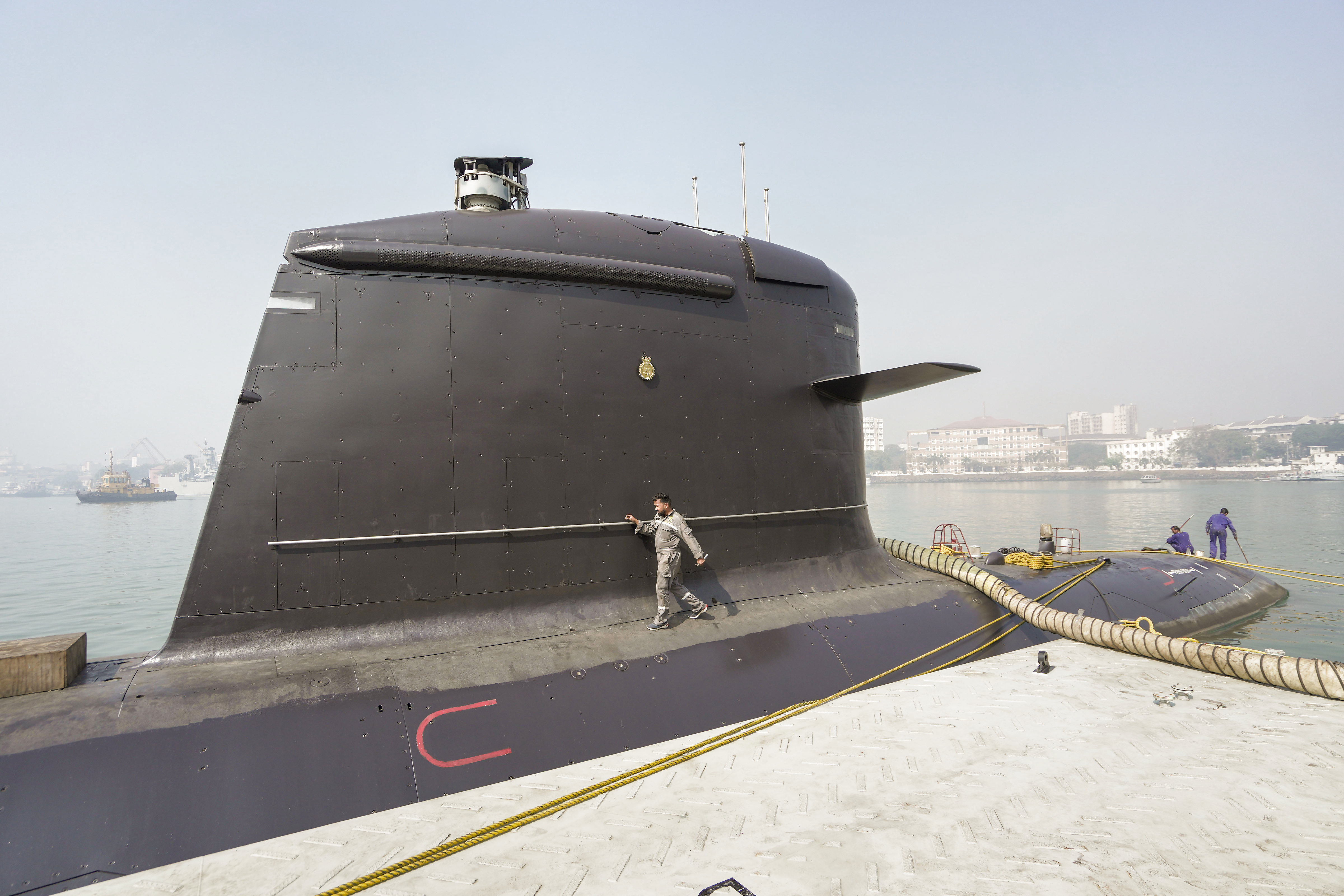
views
INS Vagir, the fifth submarine of the Kalvari Class submarines, was commissioned into the Indian Navy on Monday, giving a boost to the force’s prowess. INS Vagir, which has been built by Mazagon Dock Shipbuilders Limited here with technology transfer from France, was commissioned in a ceremony attended by Chief of Naval Staff Admiral R Hari Kumar.
“The submarine will boost the Indian Navy’s capability to further India’s maritime interests in deterring the enemy, and conducting Intelligence, Surveillance and Reconnaissance (ISR) to provide decisive blow in the times of crisis,” the Navy said.

‘Vagir’ means sand shark, which represents stealth and fearlessness, two qualities synonymous with the ethos of a submariner, it said.
How is Vagir Special?

- The submarine also has the capability of launching marine commandos for special operations, while its powerful diesel engines can quickly charge batteries for a stealth mission, the Navy added.
- For self defence, it has a state of the art torpedo decoy system, the Navy release added.
Strength of Indian Navy
The Indian Navy is currently operating sixteen diesel-powered submarines, according to reports. The submarine fleet of India is based in two cities: Visakhapatnam on the east coast and Mumbai on the west coast.
Classes of Indian Submarines
Union,
Russia
An In-depth Look
Sindhughosh-Class
Shishumar-Class
- India operates four Shishumar-class vessels and these submarines are 65 metres long, have an 8-meter beam, and can travel at speeds of up to 22.5 knots when submerged, the report says.
- They can stay submerged for up to 50 days without coming to the surface. Torpedoes can be fired from their weapons systems. Since their commissioning, all four Shishumar-class vessels have undergone refits, it adds.
Arihant Class
- Under its ATV Program, India is expected to build four nuclear-powered ballistic missile submarines (SSBNs). INS Arihant, the first vessel in this class, was commissioned in 2014.
- It is powered by an 83MW enriched uranium-fueled pressurised light-water reactor (PWR). The Arihant-class submarines are 110 metres long with an 11-meter beam and can submerge at speeds of up to 24 knots, the report by NTR states.
- They can stay submerged for up to 50 days without coming to the surface. Their weapons systems can launch torpedoes as well as submarine-launched ballistic missiles.
Kalvari-Class
- Under the Project-75 programme, India is expected to build six Kalvari-class diesel-electric attack submarines. In 2017, the first vessel in this class was commissioned.
- The Kalvari class is based on the Scorpène-class submarines of France. These submarines are 67.5 metres long, have a beam of 6.2 metres, and can travel at up to 20 knots when submerged. They can stay submerged for up to 50 days without coming to the surface. Their weapons systems can launch torpedoes and anti-ship missiles.
Read all the Latest Explainers here















Comments
0 comment